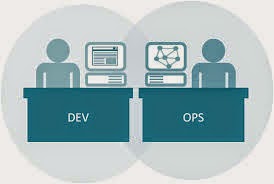DevOps certification training - I hope it's not deja vu
I've recently noticed that training organisations have started to advertise DevOps certification training where students gain a fundamental knowledge of DevOps concepts. Attendees can then undertake a multi-choice exam, hopefully leading to a certificate that demonstrates their acquired knowledge in DevOps. I immediately reflected upon a presentation by Michael Ducy (@mfdii) entitled " Why You're Destroying DevOps " at DevOpsDays Brisbane conference in 2014. I felt it was a great thought provoking presentation ( video ) about DevOps as an industry movement. I felt alot of synergies between Michael's current concerns for DevOps and what I have witnessed with ITIL over the past 10 years. On the topic of certification training, I feel that the method of gaining ITIL certification via multi-choice exams can lead to negative behaviours back in the workplace. In order to pass the foundation exam (which you or your employer has just paid hundreds of dollars), you ...


